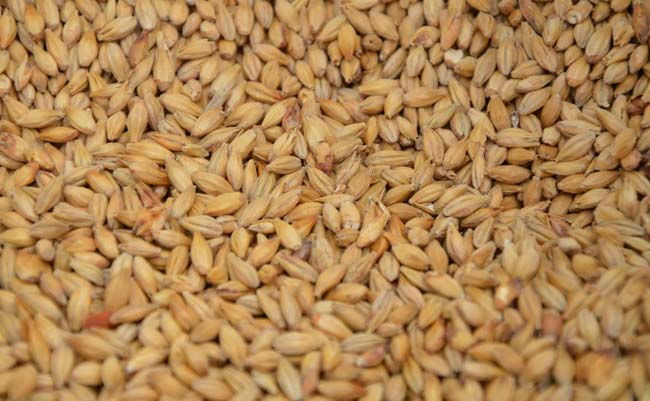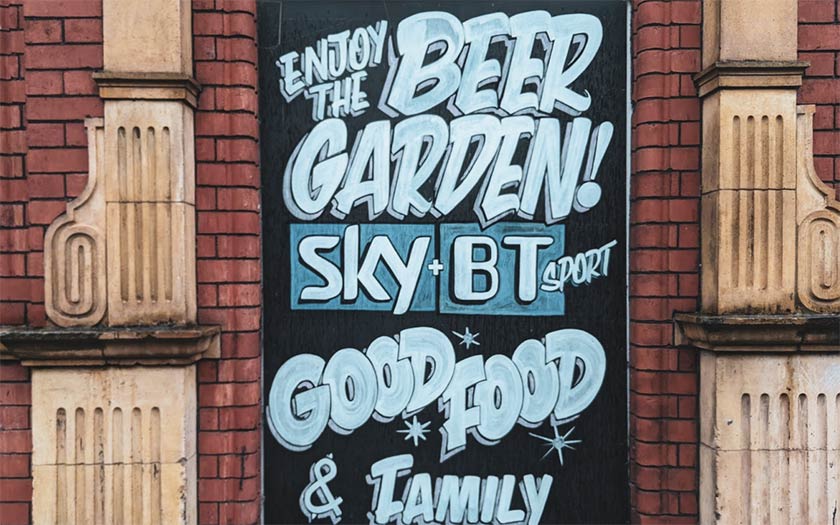Visit the Boak and Bailey's Beer Blog site
Here’s all the writing about beer and pubs that leapt out at us in the past seven days, from remote pubs to craft malt.
The price of a pint, and public perception of the price of a pint, is an important metric for the industry. A new survey by CAMRA suggests that beer feels less affordable to people now than it did even a few years ago:
In 2019 42% of respondents to a YouGov survey for CAMRA said the cost of a pint at the bar was unaffordable – but that figure has jumped to 52% when the survey was repeated last week… It comes as the nation’s pubs are facing rising prices, skyrocketing energy bills and a dip in consumer spending power – prompting CAMRA to issue another plea to government for action to save the UK’s pubs.
 SOURCE: Lutz Wernitz/Unsplash.For Pellicle, our old pal Alistair Reece has written about craft malting in Virginia, USA, and how a tweak to the law triggered the birth of this new industry:
SOURCE: Lutz Wernitz/Unsplash.For Pellicle, our old pal Alistair Reece has written about craft malting in Virginia, USA, and how a tweak to the law triggered the birth of this new industry:
In 2012, then Governor of Virginia, Bob McDonnell, signed into Virginia law a bill with the ever-so-memorable moniker of SB604. The law was to be a watershed moment in the growth of the craft beer industry in the US state, as it brought brewery taprooms into line with wineries by giving them the freedom to sell their wares by the glass… The ability to go to a brewery and have a pint of beer, rather than simply a flight of samples, lit the touch paper on the explosion in breweries throughout Virginia. Prior to the bill passing, there were fewer than 30 breweries in Virginia; today there are nearly 300. Many of them able to operate purely because they can sell pints directly to consumers through their taprooms.
 The Rhubarb.The Bristol Cable is a Bristol community newspaper with a radical bent that typically takes the side of the underdog. This week, it turned its attention to endangered pubs with a piece by Alex Turner on the campaign to save The Rhubarb, our (currently closed) local:
The Rhubarb.The Bristol Cable is a Bristol community newspaper with a radical bent that typically takes the side of the underdog. This week, it turned its attention to endangered pubs with a piece by Alex Turner on the campaign to save The Rhubarb, our (currently closed) local:
[When] the Rhubarb closed in summer 2020, its last landlords claimed the business had become unviable. That’s a position the owner, London-based Mona Mogharebi, reiterates to the Cable… Her company Natan submitted plans to redevelop the site into 14 flats – eight in a new building in the garden – before withdrawing them early this year. They were replaced by a fresh application offering the possibility of reopening a pub on the ground floor, while still converting the upstairs and building flats in the garden…*
 Jeff Alworth makes a sharp observation about how most people – people not obsessed with beer – make sense of the descriptors supposed to distinguish one style from the next:
Jeff Alworth makes a sharp observation about how most people – people not obsessed with beer – make sense of the descriptors supposed to distinguish one style from the next:
It is my strong belief that people inside the craft beer bubble vastly overestimate the public’s knowledge and interest level. The word “session” is a great example. It’s an English word, but not an American one. You have to understand British pub culture and then be able to apply the sense of the term to a low-ABV beer in a way the British never did (until they started brewing American-style IPAs)… When I launch into the explanation, I get maybe half a sentence. “Well, in the United Kingdom, drinking culture revolves around…” Nope, I’ve lost them…* “It means ‘low-alcohol.’” That’s what they want to know… The query “What’s an altbier?” is meant to elicit “a malty brown ale,” not “In German, alt means old, and this refers to the 19th century style called bitterbier…”
 On the way to Inverie. SOURCE: Kristóf Vizy/Unsplash.The Old Forge at Inverie on Scotland’s Knoydart Peninsula, Britain’s most remote mainland pub, is a favourite of travel writers and this isn’t its first appearance in one of our round-ups. Still, we’re always happy to be taken there, especially when there is news to report. For BBC Travel Daniel Stables writes:
On the way to Inverie. SOURCE: Kristóf Vizy/Unsplash.The Old Forge at Inverie on Scotland’s Knoydart Peninsula, Britain’s most remote mainland pub, is a favourite of travel writers and this isn’t its first appearance in one of our round-ups. Still, we’re always happy to be taken there, especially when there is news to report. For BBC Travel Daniel Stables writes:
Around 120 residents lived here at the last count, spread across 86 square miles (that’s approximately the same population density as Alaska). The majority of those brave and hardy souls live in Inverie, and now, after a community buyout in March 2022, most of them own a stake in the Old Forge… In the decade prior, the pub’s legendary status had waned, with the previous owner closing for six months each winter when tourists were few. The pub’s community spirit was lost; so too its status as a year-round sanctuary for tired, thirsty hikers. Even to summer visitors, impressions were often not good. “This place used to be jumping,” reads one of the many unflattering online reviews from this dark period. “Now it is like a morgue.”… When the Old Forge was finally put on sale in February 2021, a community buyout was quickly proposed and the response was emphatic… In a little over a year, in April 2022, the pub re-opened, this time in the hands of the community.
 The Thatched Barn. SOURCE: Elstree & Borehamwood Museum.The blog of Elstree & Borehamwood Museum this week featured a post about a lost building – The Thatched Barn roadhouse:
The Thatched Barn. SOURCE: Elstree & Borehamwood Museum.The blog of Elstree & Borehamwood Museum this week featured a post about a lost building – The Thatched Barn roadhouse:
Commissioned in 1927 by a ‘Mrs Merrick’, of which not much is known, it was opened in 1934 on the A1 or the Barnet By-Pass. In the style of an American ‘roadhouse-motel’ but with an English twist with its thatched roof, it was ideally suited for ‘stars’ from the flourishing studios nearby to take their companions. With a large dining area, chefs, a swimming pool, and other facilities located a short drive from the expensive areas of north London it became a well-known attraction.
For more context on roadhouses check out this post of ours from a few weeks ago.
Finally, from Twitter, an interesting development:
Cloudwater is usually ahead of the UK brewing game – they were among the first to brew NE style beer, go into 440s, focus on webshop sales.
So I’m interested in this core range of three pale ales barely 1% apart and a lager labelled “classic”
https://t.co/eqbtvBCCDe
— Jonny Garrett (@JonnyGarrett)
August 5, 2022
News, nuggets and longreads 6 August 2022: people power originally posted at Boak & Bailey's Beer Blog
More...
SOURCE: Lutz Wernitz/Unsplash.For Pellicle, our old pal Alistair Reece has written about craft malting in Virginia, USA, and how a tweak to the law triggered the birth of this new industry:
The Rhubarb.The Bristol Cable is a Bristol community newspaper with a radical bent that typically takes the side of the underdog. This week, it turned its attention to endangered pubs with a piece by Alex Turner on the campaign to save The Rhubarb, our (currently closed) local:
Jeff Alworth makes a sharp observation about how most people – people not obsessed with beer – make sense of the descriptors supposed to distinguish one style from the next:
On the way to Inverie. SOURCE: Kristóf Vizy/Unsplash.The Old Forge at Inverie on Scotland’s Knoydart Peninsula, Britain’s most remote mainland pub, is a favourite of travel writers and this isn’t its first appearance in one of our round-ups. Still, we’re always happy to be taken there, especially when there is news to report. For BBC Travel Daniel Stables writes:
The Thatched Barn. SOURCE: Elstree & Borehamwood Museum.The blog of Elstree & Borehamwood Museum this week featured a post about a lost building – The Thatched Barn roadhouse:




 Reply With Quote
Reply With Quote